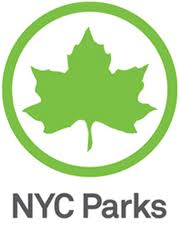
New York City Department of Parks and Recreation has been remeasuring every park in their entire system. They have surveyed the smallest, South Oxford Park in Brooklyn to the largest Pelham Bay Park in The Bronx. Officials are using new mapping software and satellite technology systems, which is is a new method of updating city records dating as far back as the 19th century.
The good news is also bad news, but the best news is that The Bronx is number one. There are other winners and unfortunately some losers. In Manhattan, Fort Washington Park is 24 acres larger, but East River Park lost 11 acres, and Thomas Paine Park downtown lost 0.049 acres.
The Bronx's Soundview Park, where the Bronx River meets the East River, grew by 63 acres. But all of Soundview’s new territory is underwater the parks department owns out to the pier-head line, a federal delineation.
Over all, the department has picked up acres, on paper at least, and the new total, when completed, should push park acreage over 30,000 for the first time.
The biggest loser was clearly Flushing Meadows. Previously the third-largest park in the city, it dropped to fourth place after the new analysis put its actual acreage at 897 (897.62 to be precise), down from 1,255 acres. The park, the site of two World’s Fairs and now the subject of a furious debate over whether part of it should be devoted to a new soccer stadium, essentially switched places with Van Cortlandt Park in the Bronx, with 1,146 acres.
The largest park in the system is still Pelham Bay 2,772, an increase of 7, followed by the Staten Island Greenbelt, a 2,800-acre expanse of contiguous park-lands that includes 2,316 acres that the parks department controls. Central Park remains in fifth place, with 843 acres.
To the Park department’s relief, most revisions involved under-counting. But not so at Flushing Meadows, where, in addition to the stadium proposal, there are also plans to expand the United States Tennis Center. The official paper record for the park, called a property card, was last modified in 1980, when the size was recorded as 1,255 acres. That was a slight revision from the 1950s, when the park’s size was listed as 1,257 acres. Most puzzling was the acreage given on the original title document from July 1936: 1,031 acres.
A major reason for the Flushing Meadows discrepancy was human error. It appears that the failure by someone along the way to subtract the acreage of Grand Central Parkway, which ran through the park from the beginning, or the Van Wyck Expressway, Long Island Expressway and Jewel Avenue, which would later eat away at it.